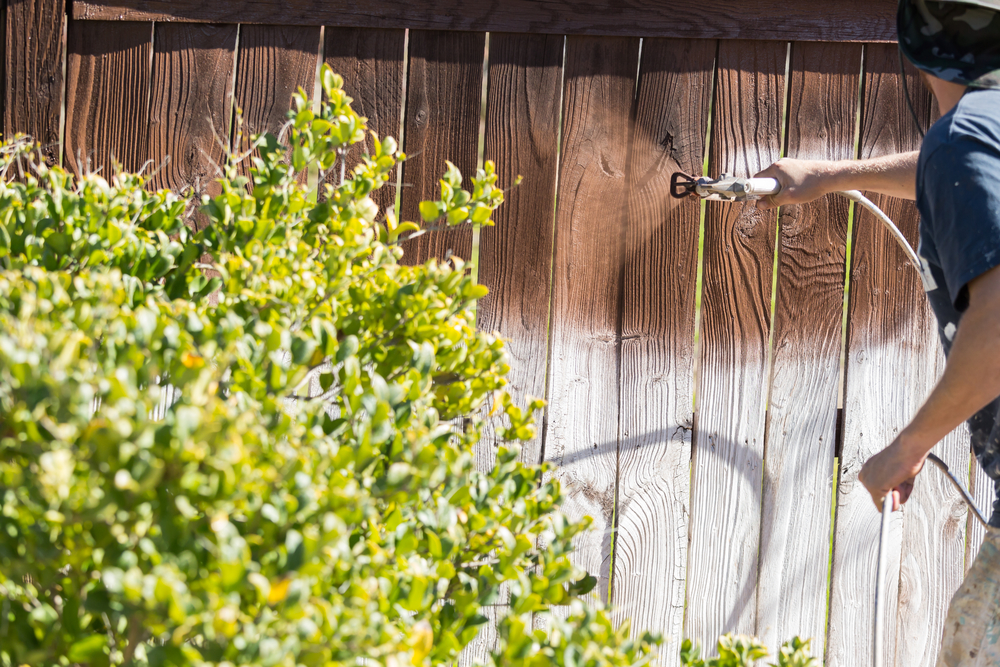When it comes to the lifespan of a new fence, one of the most important factors is the “finishing” option used. Finishing refers to paint or stain that’s put on the fence for both practical and aesthetic reasons, and it can have a big impact on how long your fence lasts after it’s installed.
At Utah Fence Warehouse, we can help you with finishing and all related fence supplies for vinyl fences, wood fences, wrought iron fences and numerous other types. In general, there are three broad options for finishing your fence: Painting it, staining it, or leaving it natural. Let’s look at some basics on each.

Paint
Paint was the original finishing option for fences, and was used for a long time before staining really became popular. For many homeowners, there’s no replacement for that true paint look on a fence, particularly a wood option.
That said, paint comes with a few downsides. You’ll have a good deal of maintenance involved with a standard painted fence, including likely having to repaint it at least once every three years – or more often in many cases, since paint can crack and peel due to the elements. Repainting is a significant task, too; you have to scrape off all old pain, prep the surface, and then repaint. If you’re prepared for these tasks, though, nothing replaces good old-fashioned paint on the fence.
Stain
Staining generally comes at a higher upfront cost than painting, but it’s important to think about this from a long-term standpoint. Remember that if you paint, you’ll have to repaint every few years at least – this means that painting comes with recurring costs that add up over time.
With staining, there’s no such concern. Stains do fade and require re-staining, but this happens far less often than with paint. Stains don’t peel or crack, so even when you do rarely have to re-stain, the process will be much easier. There are several stain options, from solid stains to transparent and semi-transparent options that leave the look of your natural material below the stain. Some stains are only meant to waterproof the fence, not provide any color at all.
Leaving Natural
Finally, some homeowners choose the natural option – applying no stain or paint whatsoever to the fence, allowing it to stand up to the elements itself. Whether this choice is right for you often comes down to materials; vinyl fences, for instance, are made to withstand various extreme weather situations, including wind, moisture and even direct impact. Wood fences, on the other hand, will likely deteriorate over time if left exposed to weather – though these days, that “weathered” look for fences is becoming more popular if you don’t have functional concerns to deal with.
For more on which finishing option to choose for your fence, or to learn about any of our fence supplies, speak to the pros at Utah Fence Warehouse today.

